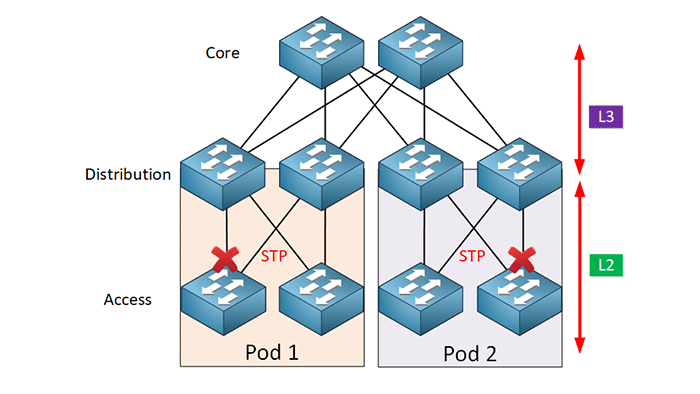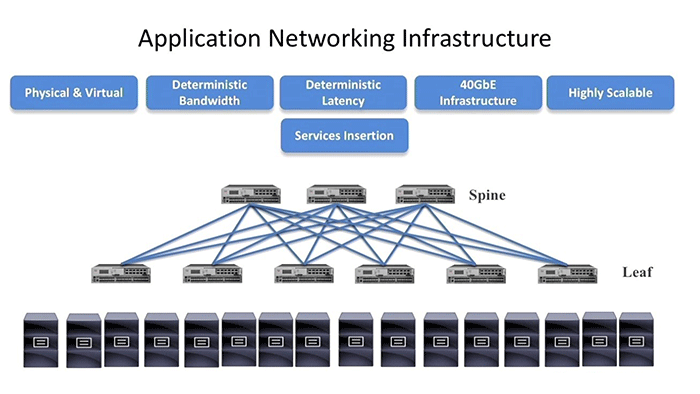Todays, enterprises’ network traffic growing between servers within data centers and Cisco’s new two-tier Ethernet switching architecture called Cisco Leaf and Spine Architecture comes to play as a solution.
Traditional Three Layer Network Model
three-tier hierarchical network model is with networks for a long time and consists of three different layers for design and deployment purposes, The Core, Distribution layer, and the Access layer.
Usually the core Layer includes the most expensive routers assumed as the back bone of networks. Core Layer routers are used to merge geographically separated networks in order to move information on the network as fast as possible.
The Distribution Layer which is located in the middle of core and access layers, provide boundary definition by implementing access lists and other filters. This Layer defines policy for the network using high-end layer 3 switches and ensures that packets are properly routed between subnets and VLANs in your enterprise.
And finally, Access layer includes access switches which are connected to the end devices such as computers, printers and etc. Access layer switches ensures that packets are delivered to the end devices.
Overall, Availability, security, scalability and familiarity are the main pros of Three-layer architecture while limited bandwidth and latency are the most known cons for this model. Although, migrating to leaf-and-spine architecture will address these all these challenges providing better infrastructure for enterprise data centers as part of its Application Centric Infrastructure (Cisco ACI) technology.
Leaf-and-Spine Architecture
In Cisco Spine and Leaf Architecture, every leaf switch is connected to each of the spine switches in a full-mesh topology. The leaf layer includes access switches that connect to devices such as servers while the spine layer is the backbone of the network and is responsible for interconnecting all leaf switches. The path is randomly chosen so that the traffic load is evenly distributed among the top-tier switches. If one of the top tier switches were to fail, it would only slightly degrade performance throughout the data center. In this method, an additional spine switch can be added, and uplinks can be extended to every leaf switch, resulting in the addition of interlayer bandwidth and reduction of the oversubscription.
With a Cisco Spine and Leaf Architecture, no matter which leaf switch to which a server is connected, its traffic always has to cross the same number of devices to get to another server (unless the other server is located on the same leaf). This way of approach keeps latency at a predictable level because a payload only has to hop to a spine switch and another leaf switch to reach its destination.
Cisco FabricPath Spine-and-Leaf Network
The FabricPath spine-and-leaf network provides a simple, flexible, and stable network, with high scalability and fast convergence characteristics. FabricPath IS-IS as its control plane, is designed to determine FabricPath switch ID reachability information. To know end-host reachability information, FabricPath switches rely on initial data-plane traffic flooding. A Layer 3 function is laid on top of the Layer 2 network. Common Layer 3 designs use centralized routing: that is, the Layer 3 routing function is centralized on specific switches (spine switches or border leaf switches). The FabricPath network supports up to four Anycast gateways for internal VLAN routing.


